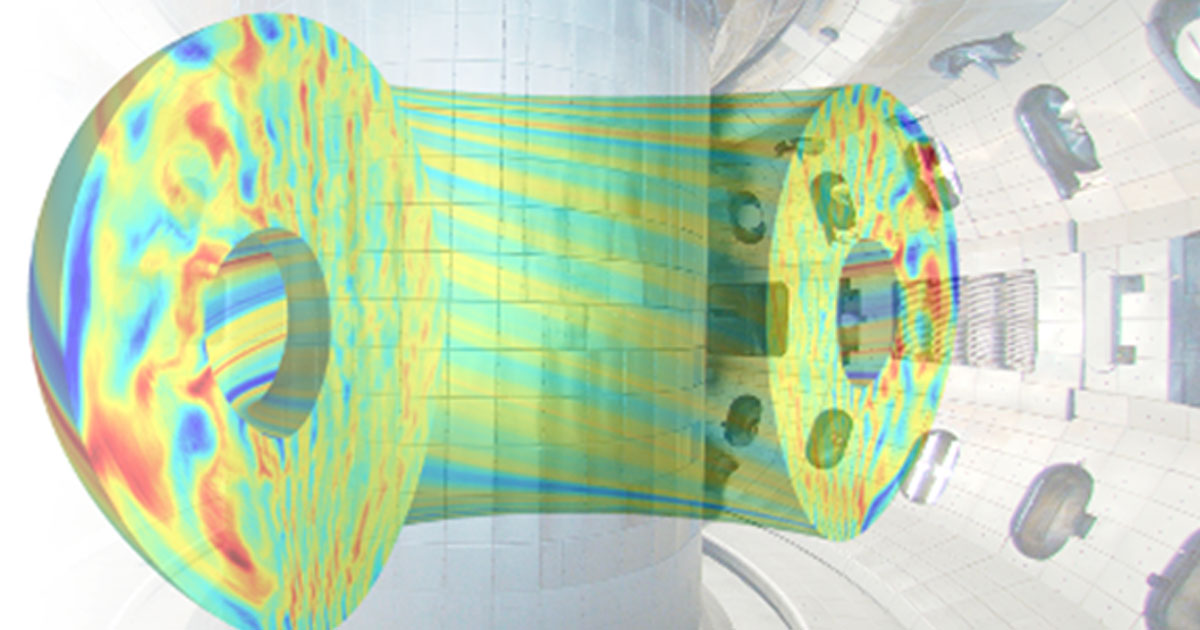Simulations on Frontier and Summit will assist optimize fusion reactor efficiency
San Diego – 05 Jan 2023 – Scientists at Normal Atomics (GA), the Oak Ridge Nationwide Laboratory (ORNL), and the San Diego Supercomputer Heart at UC San Diego (UC San Diego) have been awarded extremely sought-after computing time on two of essentially the most highly effective supercomputers on the planet as a part of the Division of Vitality’s (DOE’s) Workplace of Science Progressive and Novel Computational Impression on Principle and Experiment (INCITE) program.
The award, introduced in November, will permit the workforce to carry out simulations to foretell power losses in fusion plasmas and assist optimize plasma efficiency for the following era of fusion power reactors. GA scientist Emily Belli will lead the mission, together with GA Principle and Computational Science Director Jeff Sweet and scientist Gary Stabler; UC San Diego software program developer Igor Sfiligoi; and ORNL computational scientist Reuben Budiardja.
“To realize sensible and financial fusion power, we have to absolutely perceive how burning plasmas will behave throughout operation in a fusion reactor,” stated Belli. “Simulations equivalent to these are extraordinarily computationally intensive, which is why this award is so vital. The assist from DOE will assist us shut vital gaps in fusion plasma idea.”
This 12 months’s INCITE awards are notable for together with the primary allocations on Frontier, the Oak Ridge Management Computing Facility’s (OLCF’s) flagship HPE Cray EX system, which debuted in Might because the world’s quickest supercomputer with 1.1 exaflops of efficiency and a theoretical peak efficiency of two exaflops. FLOPS (floating-point operations per second) are a measure of laptop processing velocity, and an exascale facility like Frontier operates at a velocity roughly 10 million instances quicker than a typical desktop laptop.
Roughly half the computing time awarded to the workforce is on Frontier, with the rest on OLCF’s Summit supercomputer, at the moment the world’s third-fastest system.
The GA-led mission will discover a key concern for fusion power. In a fusion reactor, efficient and secure confinement of thermal power in a plasma is important for “burning” (i.e., self-sustaining) fusion. Plasma confinement, nonetheless, is restricted by particle and power losses as a consequence of turbulence, which is pushed by instabilities that may restrict efficiency. Understanding the underlying mechanisms that drive turbulence in burning plasmas is important in designing the primary era of fusion energy vegetation like GA’s Fusion Pilot Plant.
The workforce’s simulations will use GA’s CGYRO code, which was developed particularly for fusion simulations. The CGYRO algorithm is extremely optimized for scalability on methods like Frontier and Summit that use cutting-edge GPU-based architectures.
Open to any researcher or analysis group on the planet with a computationally intensive mission, INCITE’s software course of is extremely aggressive. INCITE proposals are assessed by peer-review panels composed of worldwide specialists, with every panel representing a distinct scientific self-discipline. The proposals are additionally evaluated on a technical stage by every computing facility for computational readiness and the scalability of the mission’s code and its algorithms.
About Normal Atomics: Because the daybreak of the atomic age, Normal Atomics improvements have superior the state-of-the-art throughout the total spectrum of science and expertise – from nuclear power and protection to medication and high-performance computing. Behind a gifted world workforce of scientists, engineers, and professionals, GA’s distinctive expertise and capabilities proceed to ship protected, sustainable, economical, and modern options to satisfy rising world calls for.
For extra info contact:
Evan Polisar
Strategic Communications Supervisor
858-455-3474
Evan.Polisar@ga.com

